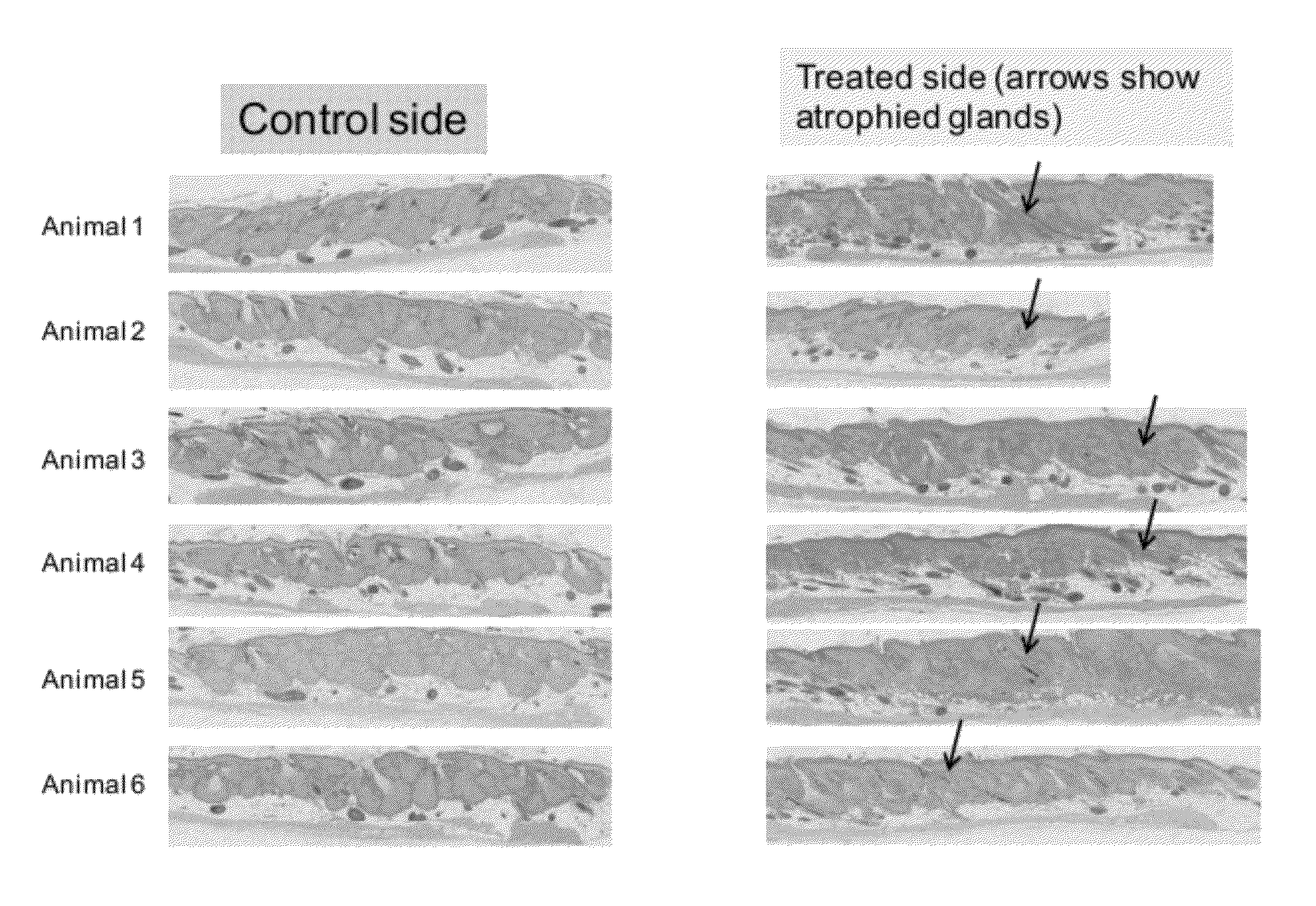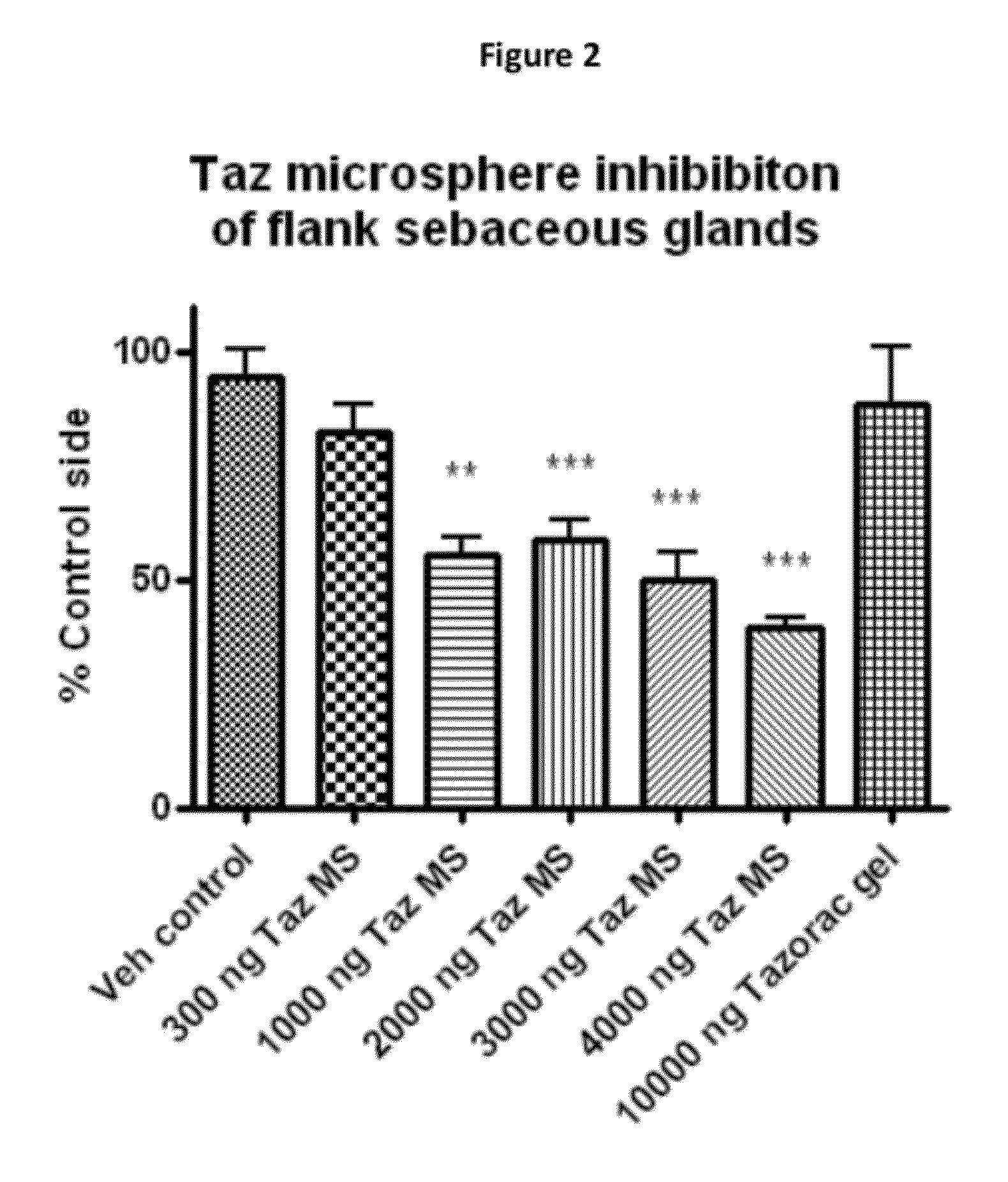Targeted Delivery of Retinoid Compounds to the Sebaceous Glands
- Summary
- Abstract
- Description
- Claims
- Application Information
AI Technical Summary
Benefits of technology
Problems solved by technology
Method used
Image
Examples
examples
[0136]The invention is illustrated further with the following examples.
Tazarotene Microspheres
[0137]The inventors prepared a composition comprising PLGA microspheres having an average diameter of about 4.2 μm and containing 0.03% tazarotene.
Animals and Treatment Procedure
[0138]The inventors used male hamsters weighing about 110-120 g. The animals arrived at least 7 days before the study and were single-housed. Animals are randomized by weight. The inventors shave the right side flank to expose the flank organ, removing as much hair as possible, and wiped the animals clean with a cotton swab soaked with 70% ethanol.
[0139]The inventors applied the 0.03% tazarotene 4.2 μm microspheres with a pipette and carefully spread it over the flank organ. Each time before applying the drug, the inventors wiped clean the flank organ area with a cotton swab soaked with 70% ethanol. The inventors treated animals in this manner 5 days / week for 26 days. If hair grew back on the flank organ the invento...
PUM
| Property | Measurement | Unit |
|---|---|---|
| Diameter | aaaaa | aaaaa |
| Diameter | aaaaa | aaaaa |
| Diameter | aaaaa | aaaaa |
Abstract
Description
Claims
Application Information
 Login to View More
Login to View More - R&D
- Intellectual Property
- Life Sciences
- Materials
- Tech Scout
- Unparalleled Data Quality
- Higher Quality Content
- 60% Fewer Hallucinations
Browse by: Latest US Patents, China's latest patents, Technical Efficacy Thesaurus, Application Domain, Technology Topic, Popular Technical Reports.
© 2025 PatSnap. All rights reserved.Legal|Privacy policy|Modern Slavery Act Transparency Statement|Sitemap|About US| Contact US: help@patsnap.com



